Feature / Crest of a wave
If you talk to NHS costing practitioners, they want to be working with clinical colleagues to use cost data to drive service and financial improvement – not filing more and more cost returns to feed central requirements. And that is exactly what is happening at Nottingham University Hospitals NHS Trust, where its WAVE programme has united clinicians, operational managers, service improvement and finance professionals to drive up value.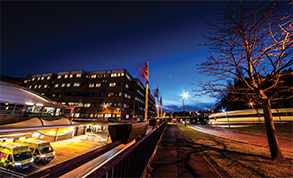
WAVE (working to achieve value and excellence) has been running for six years and is led by deputy programme director Richard Smith. Initially its focus was on cutting costs, but it has evolved over the years to look more at waste reduction and the development of efficient pathways.
And with this change has come a wave of enthusiasm from clinicians and service lines, who now see the programme as a way to tackle longstanding issues to improve experiences and outcomes for patients, while improving flow and increasing capacity.
Sophie Wilne is clinical director for the trust’s Nottingham Children’s Hospital, which runs 100 beds and cares for around 40,000 children each year. She says the programme is about working together and making the best use of people’s time and skills.
‘I’m also a full-time paediatric oncologist and all my heads of service at best probably have half a day to do their head of service roles,’ she says. ‘Some of the things we have achieved through the WAVE programme are things we’ve known intuitively make sense and we’ve been trying to do for years.
‘But it’s having the time to make a complete case. It’s about having access to the data and putting it together in a way that the divisional leadership team and board can understand. And that is completely outside my skillset.’
Three phases
Specialties that sign up commit to a 17-week programme, which breaks into three distinct phases. The first phase – data cleansing – is led by the costing team and involves presenting all the available data back to a multidisciplinary team put forward by the specialty.This will include patient-level cost, Getting It Right First Time and model health data, and effectively shows the speciality how the outside world sees its performance.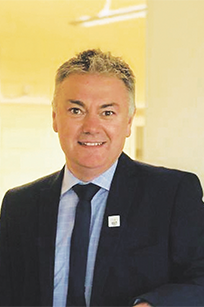
‘It is an opportunity to challenge the data – if it doesn’t look right, how do we need to change it?’ says Scott Hodgson (pictured), the trust’s head of clinical accounting and costing transformation.
It is also a chance for the specialty to tell the costing team the most useful way the data could be presented, leading to the development of bespoke service-specific dashboards.
In phase two – the sandpit, led by the service improvement leads in Mr Smith’s team – the issues to be tackled are agreed and a long list of possible solutions developed.
Crucially, this seven-week section includes two ‘confirm and challenge’ sessions with the divisional leadership team to ensure it is on board and agrees with the direction of travel, and to prioritise the proposed solutions.
The end product is a shortlist of initiatives with a maximum of three or four. ‘We know we can do three or four well,’ says Mr Hodgson. However, the further priorities remain with the team for future implementation.
The final step, led by the trust programme management office (PMO), is focused on working up executionable plans of the prioritised projects. These are then presented at the third confirm and challenge session, this time with the executive team, to agree the plans and identify the resources needed to take them forward.
Mr Hodgson says the data cleanse can go one of two ways. The data presented leads the specialty team to the areas it wants to address. Or the specialty team highlights the areas where further data is needed to test out theories for changes it believes will transform performance. This was the case for the trust’s paediatric medicine specialty, which went through the WAVE programme at the end of 2021.
‘We are the only children’s hospital in the region that doesn’t have a medical day care unit,’ says Dr Wilne. ‘We’ve needed it for a long time. But it costs money – you need to revamp an area and employ more staff.’
The pay-off is in quality of care, eliminating waits for a range of tests and treatments. But it can also take children out of inpatient beds – freeing up capacity and helping the trust with its elective recovery programme.
‘This was a strong theory,’ says Mr Hodgson. ‘But what we were able to do was get a list of diagnosis codes that would be the kinds of cases going through a day case unit.
‘And I built a dashboard showing where all the patients with these diagnosis codes were within the hospital – and they were effectively scattered across lots of different wards.
‘We were then able to look at length of stay and the costs that could be avoided with same-day discharge, alongside reducing the risk associated with keeping children in hospital longer than necessary.’
The numbers were convincing, Mr Hodgson says, and this was only using an initial draft list of diagnoses. The full impact would be greater.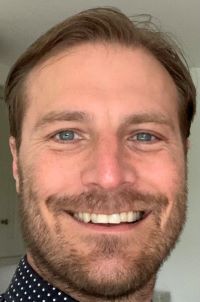
According to Mr Smith (pictured), previous business cases had failed to show how the clear patient benefits would ultimately cover the costs of implementation. ‘When we first met the team, they were pessimistic any progress could be made,’ he says. ‘However, we love a challenge.’
The first issue to overcome was finding available space for the unit – made even more challenging by the Covid-19 pandemic and the need to find capacity to deal with the built-up backlogs. This involved some lateral thinking. Trust data showed that children who need an MRI under general anaesthetic had traditionally had all their pre-op assessment and preparation in the ambulatory care unit before being taken to the MRI scanner five floors away and then brought back to recover in ambulatory care.
Pathway change
So, a second project was initiated to revise the MRI pathway. This involved using a previously under-utilised dedicated play area located with a recently introduced interoperative MRI (iMRI) scanner. Everything from pre-op to recovery could be undertaken in one place now, reducing the time taken overall.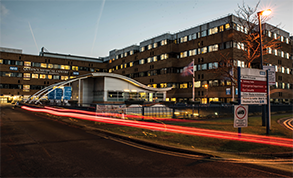
This pathway change reduced the need for the equivalent of 3.6 beds in the new medical day care unit, substantially reducing the space needed and associated costs, while enhancing patient satisfaction.
The third project supported by the WAVE programme was to improve the conversion rate of MRIs, where children needed a general anaesthetic. Benchmark data showed the level of general anaesthetic use in the trust was 36% higher than its peers.
‘By the employment of an additional play specialist – funded by the trust’s charity – we have significantly reduced the number of children requiring general anaesthesia before a scan,’ says Mr Smith. This has significantly reduced clinical risk by cutting the time for a patient to have a scan from 32 weeks to six.
‘Our conversion rate for general anaesthetic to awake scans is now really good,’ says Dr Wilne. ‘Our iMRI pathway parents like it. It’s quick and efficient and it takes three or four children out of our ambulatory care unit each day, which means those spaces can be used for children needing day case surgery.’
Mr Smith says the changes are making real differences to people’s lives, which is really rewarding. However, overall costs have also reduced as the need for general anaesthesia has also reduced. ‘The savings will pay back the investment at least three times over,’ he says.
The final proposal is for a six-chair medical day-case unit, smaller than originally proposed. Mr Smith says this will allow double the current medical activity due to demand and capacity planning, enabling the most efficient and effective use of the chairs throughout the day.
The trust has approved the capital spend needed for the project and it should be operational by the end of the year.
Dr Wilne says that in terms of revenue, the project will more than pay for itself with the growth in throughput. However, this is a bit more nuanced in a post payment by results world, where block contracts have effectively replaced activity-based payment.
Expanding on this, Mr Hodgson says the changes to the pathway will support the trust in meeting its elective activity targets (104% of 2019/20 levels). This will either help the trust avoid marginal rate repayments that kick in with underperformance or potentially increase elective recovery income if overall activity is above contracted levels.
‘The money will come through eventually, although it may not be instant,’ he adds.
Dr Milne says some children could be in the unit for 20 minutes, while others could be there for three hours, depending on the test or treatment, which could include allergy or kidney function tests. Timetabling activity will be really important, she says, but she anticipates an average of three or four children in each chair every day, all of which takes pressure off inpatient beds.
The paediatric medicine programme has been quickly followed up by another programme for paediatric surgery. This was an opportunity to use the beds freed up by the new medical day care unit to increase surgical activity and bring waiting lists down.
Insourcing team
Here, the WAVE programme has been supporting the specialty to build a case to bring insourcing into the children’s hospital to maximise its day case theatre activity.
Under insourcing, a trust subcontracts procedures to an outside body, which provides staff to deliver an end-to-end service using the trust’s facilities. It is increasingly used as a way to get the best value out of NHS assets, where the NHS does not have the available staff to deliver the desired quantity of services itself. However, it is much more difficult for children’s services as it requires staff with specific paediatric expertise.
In particular, the insourcing team was not able to supply sufficient paediatric nurses. So, the programme has helped to design a hybrid approach, where the trust supplies the nursing staff to support the broader theatre team provided by the insourcing service.
Insourcing offers a solution to a stretched paediatric workforce. ‘One of our challenges has been the cancellation of lists, often at short notice, because of lack of availability predominantly of operating theatre practitioners (ODPs) and a little bit for paediatric anaesthesia staff,’ says Dr Wilne. ‘Doing this will maximise our efficiency.’
A typical arrangement for insourcing would be the insourcing team ‘taking over’ trust facilities at the weekend. But the use of trust nursing staff makes things far more complicated and sessions will actually run during the week.
‘We’ve had to look at our starting position and current use of list space and work with the insourcing team to maximise what we can provide given the staffing constraints,’ she adds. ‘And WAVE has been very supportive of that.’
The case is not as straightforward to make as with the medical day care unit, in part because it is an expensive proposal.
‘It is going to cost a lot of money,’ says Dr Wilne, ‘But we need to do it. And there’s a huge quality issue here. Delayed procedures can have a massive developmental impact on children. You may need to do a procedure on a child with a cleft palette to support their speech development. If you miss that opportunity, that has an impact on the child for the rest of their life. Some interventions are time-critical.’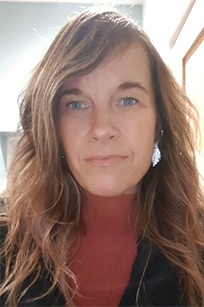
Clair Morley (pictured), deputy general manager for the children’s hospital, says the use of trust nursing staff must fit with existing service delivery. It is proposed that insourcing is used on four concurrent days. But it is really about trying to work smarter. ‘We will have two theatres running concurrently,’ she says. ‘The nursing staff are already down there looking after one theatre and these staff will also be available to support patients in the other theatre.’
Ms Morley says the proposal has been subject to a lot of scrutiny because it is a significant investment and will leave the specialty with a deficit.
Mr Hodgson says that while there has been support from senior decision-makers for the approach in the short term, they are keen to understand what a long-term solution might look like. ‘They want to understand how we would bring this all back in-house at some point,‘ he says.
Ms Morley says she has been working with theatre and recovery teams to understand how this could be sustained going forward. However, the hope is that insourcing will have an immediate impact.
‘The aim is to keep our theatres running consistently,’ she says. ‘Some 17% of our theatre lists have been taken down every week since October 2021 and that has a significant impact. That is just staff sickness and staff taking leave.’
The paediatric surgical WAVE has looked at other changes, including setting up an improved pre-operative service that will reduce surgical cancellations and adding to the number of surgical registrars to increase surgical activity.
Mr Hodgson says the programme is very popular with the trust leadership, who are keen to increase the number of WAVE programmes each year. Most importantly, it is popular with the specialties themselves.
One early success was with the trust’s spinal surgery service – see the HFMA Healthcare Costing for Value Institute’s case study, Using PLICS to drive service improvement – Nottingham’s WAVE programme. And now the WAVE team has a waiting list of specialties wanting to be involved in a WAVE programme, rather than it being imposed on them.
In addition to this, the WAVE team has been asked to lead on the GIRFT high-volume, low-complexity initiative using the WAVE methodology and has already had some early successes using the WAVE approach.
Dr Wilne did not experience the earlier version of WAVE, but says it appeared to be more about scrutiny and finance and less about what the specialty wanted.
‘The real transformation this time is that the clinical, managerial, service improvement and finance teams have come together,’ she says. ‘They asked about our problems and goals and how we are going to get there. They’ve not just thrown data at us and asked what we will do about it.
‘Instead, we’ve taken the skills we all have in different areas and brought them together to make a case for things that have significantly, or will significantly, improve patient and family experiences. That’s the change.’
For the costing team, and the WAVE team, this is the point of costing information: not producing it for the sake of it, but using it to inform service redesign and improvement.
Day case savings
The business case estimates the changes will free up surgical and medical beds, saving 14 beds a year – 11 for paediatric surgery and three for the children’s hospital. This translates into a saving of £1.1m for paediatric surgery and nearly £300,000 for paediatric medicine. The reduced length of stay from having multiple children using the recliners each day will also contribute towards a 104% increase in the medical day-case procedures delivered, once predicted new demand is factored in.
The increase in activity will help to reduce referral to treatment times. There is also an expectation that the trust will be able to reduce costly waiting list initiatives. And the changes are expected to boost the capacity of ambulatory wards, which will increase the elective capacity for patients admitted for surgical day-case procedures, reducing the backlog of patients.
Risks will also reduce – for example, in terms of the potential harm to children from prolonged waiting for surgical procedures.
Related content
The value masterclass shares examples of organisations and systems that have pursued a value-driven approach and the results they have achieved.
We are excited to bring you a fun packed Eastern Branch Conference in 2025 over three days.